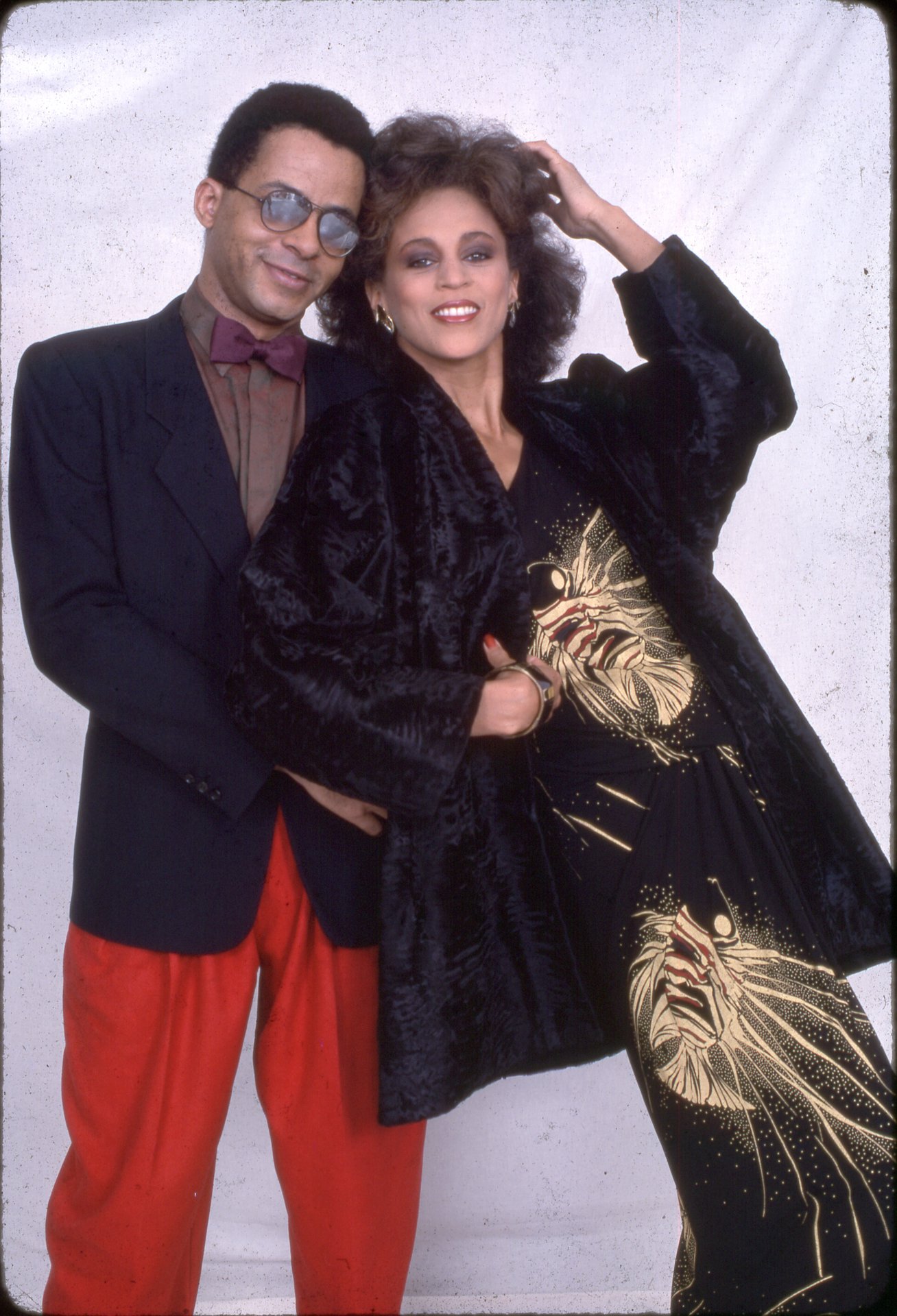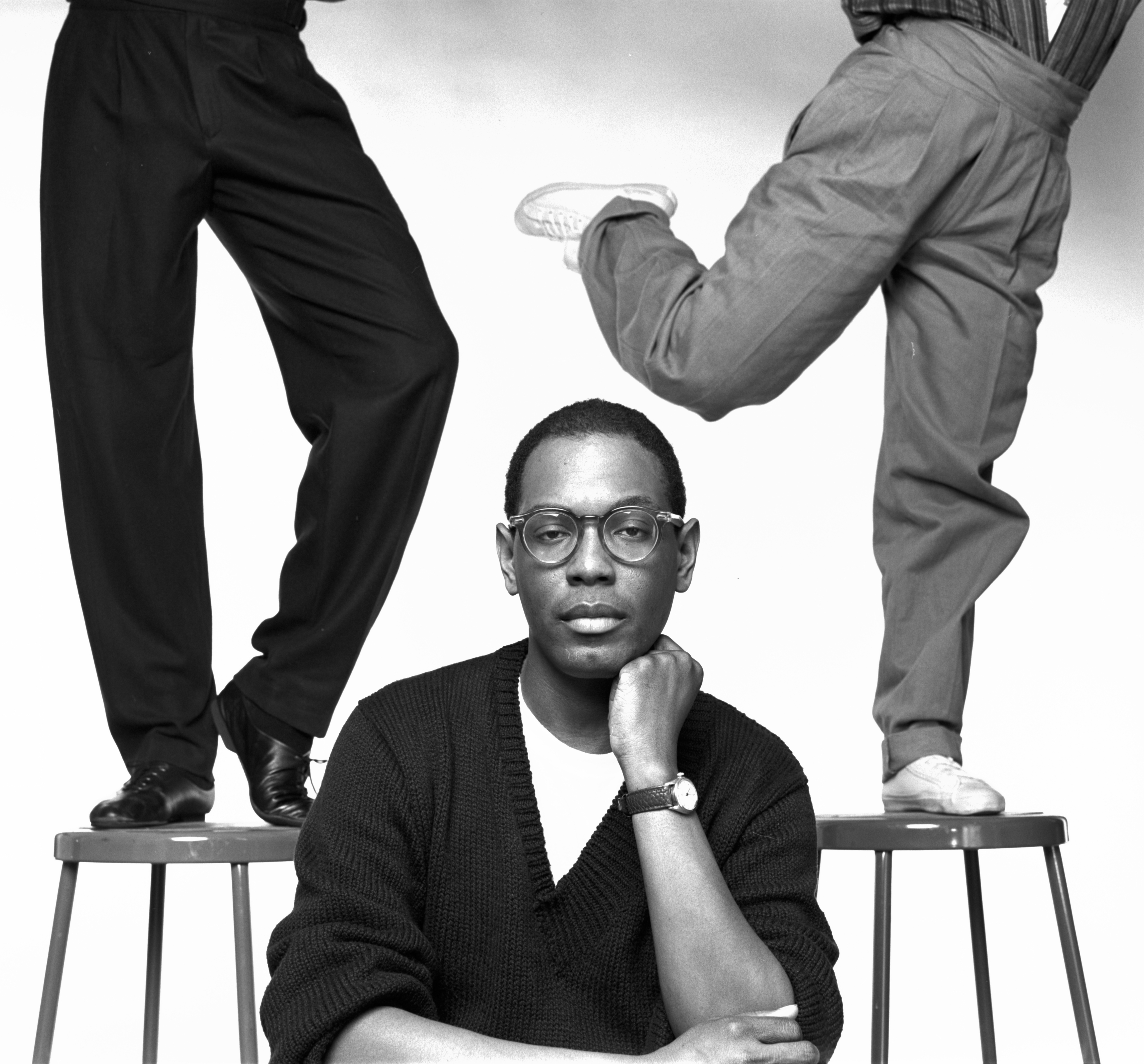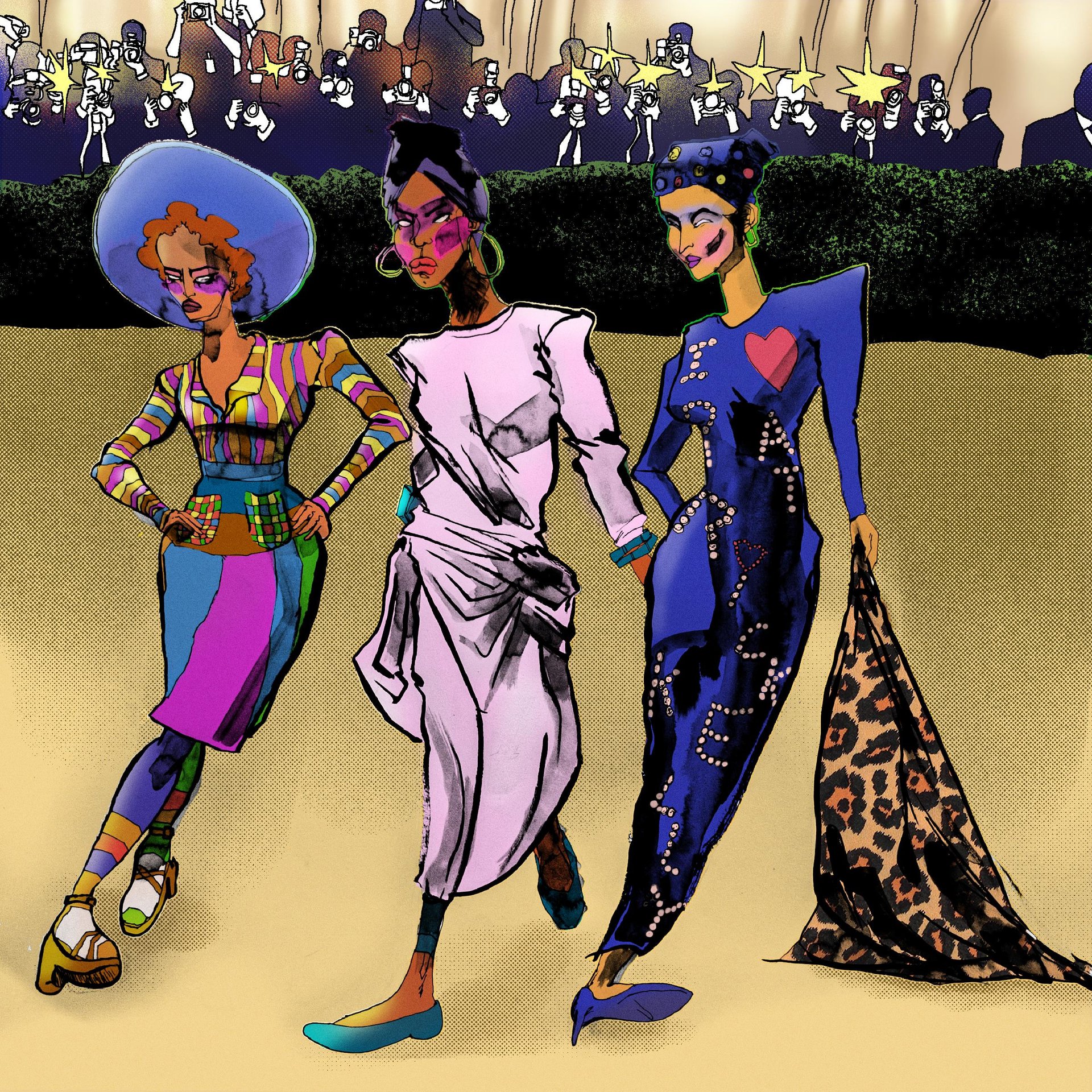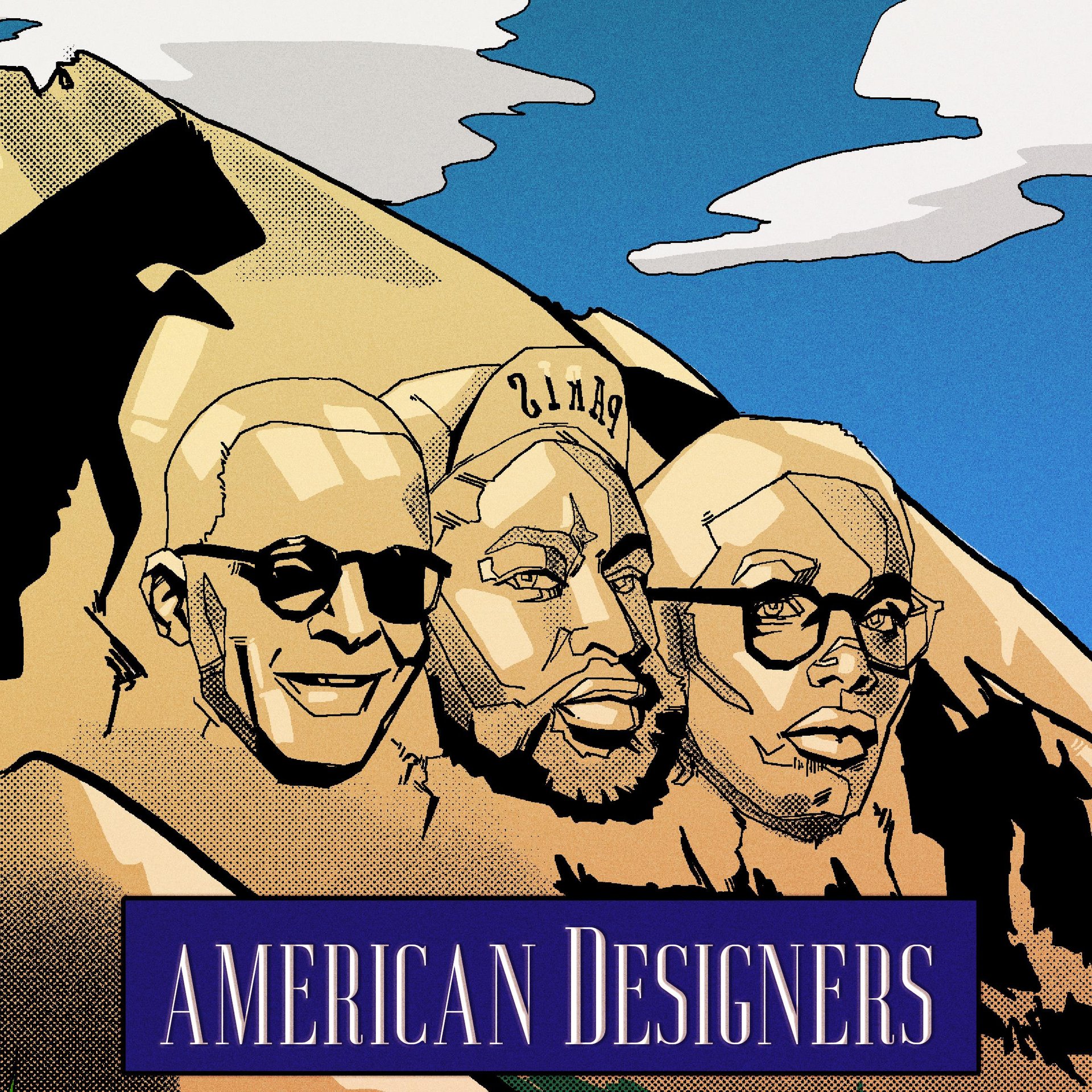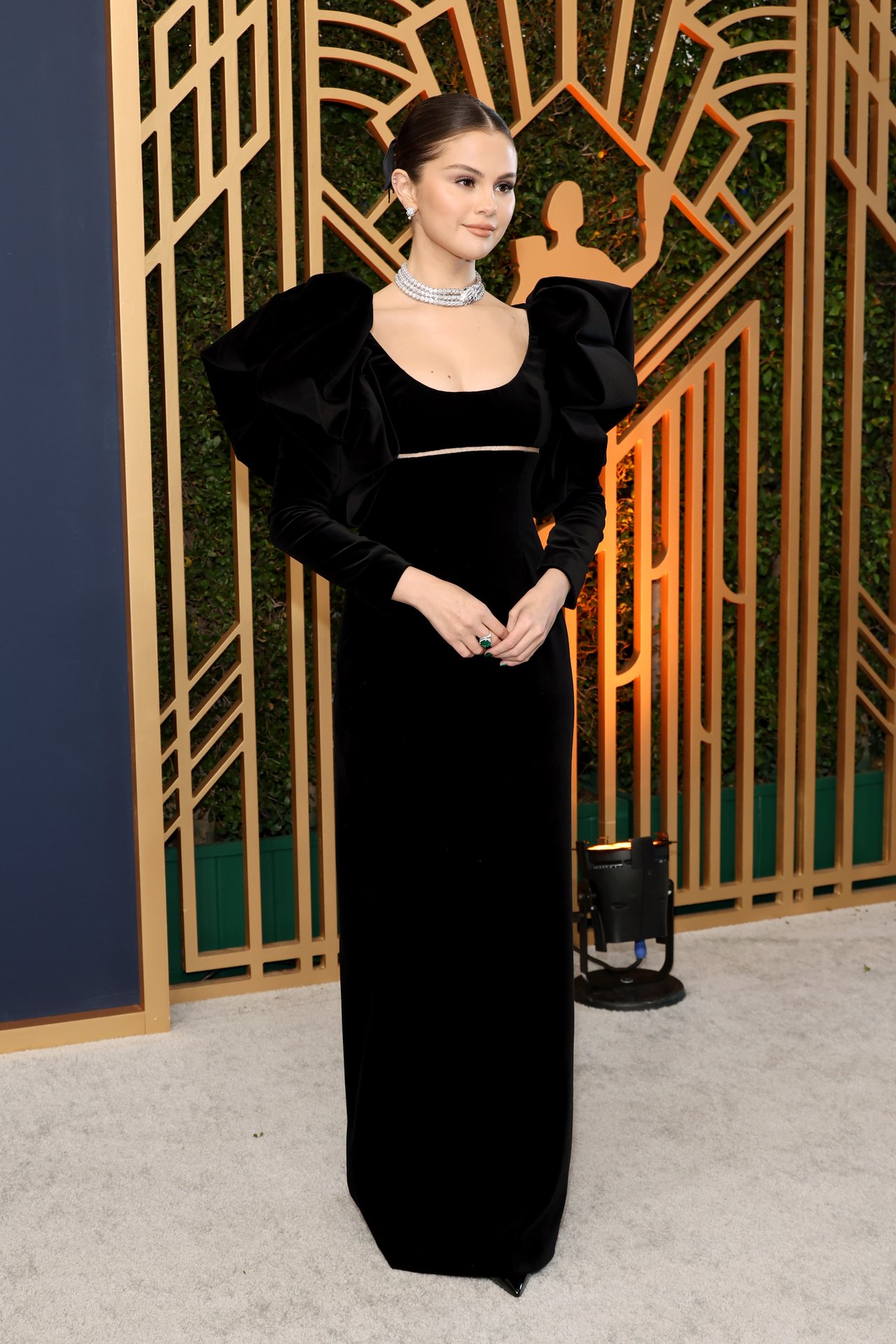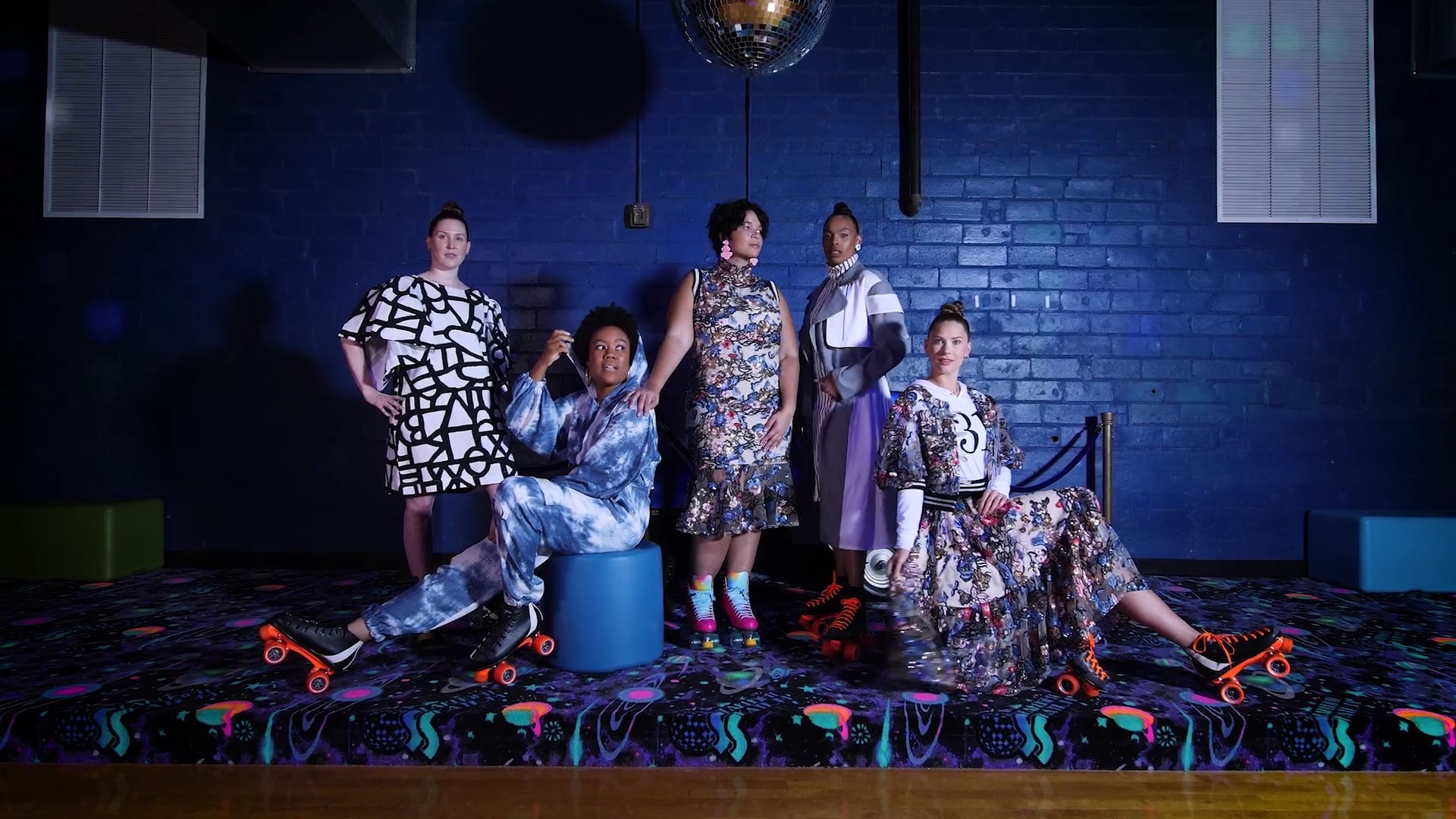Burrows’ light in storytelling brought global visibility to American fashion, especially at the famed 1973 Battle of Versailles, featuring Black models such as Pat Cleveland, Alva Chinn, Billie Blair, Bethann Hardison, and others. He was the first Black person to win a Winnie (award for womenswear) at the Coty American Fashion Critics Awards (the precursor for today’s CFDA Awards). He won two more. His fashion accomplishments proved to Kelly and Smith that it was possible to have an impact on American fashion.
Kelly, a native of Mississippi, pushed cultural and social boundaries while exploiting his very own Black trauma. He conceptualized stereotypical imagery by producing controversial fashion collections that ignited conversations for racial progression in America. Now designers are more encouraged than ever to contribute to cultural conversations in fashion.
It’s known that fashion journalists and critics were afraid of his ability to enlighten people of alternative societal perspectives. Kelly responded to his experiences as a Black, gay Southerner. He figuratively and literally projected love into his conceptual work which redefined tropes of Black love as well as ideas that Black people did not work hard enough. His signature ‘Runway of Love’ collection of dresses hand-embellished with heart shaped buttons caught the attention of his peers. In 1985, Kelly had a cover feature published in French Elle Magazine, yet his contributions to fashion had been silenced in America.
For most Black Americans, luxury is a state of prosperity – a sense of richness drawn from their resilience. For the originator of streetwear, Willi Smith, the idea of luxury was a unique departure from what the elites had originally defined it as. In 1976, Smith founded street couture. For him, the people outside in the streets had different views of the world. As an openly Black, gay, man in America, Smith connected to his peers and promoted Williwear as inclusive for everybody. To further conceptualize Williwear, the multifaceted visionary intertwined fashion with films and art exhibitions. He worked with contemporary artists to launch T-shirts for WillieWear production at Ronald Feldman Gallery in 1984.
Instead of assimilating to long held constructs of inspiration, he embraced the people around him so everyone in the streets embodied his brand Williwear, which generated $25 million in sales by the end of 1986. Smith’s collaborations were significant contributions to the fashion landscape and laid the groundwork for luxury fashion and streetwear brands crossovers such as Telfar x Mooseknuckle, Pyer Moss x Reebok, and Louis Vuitton x Supreme.



